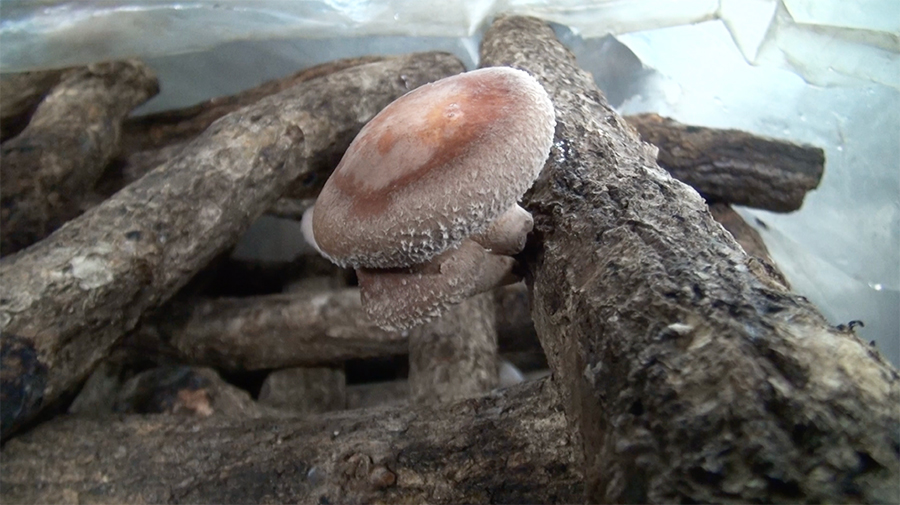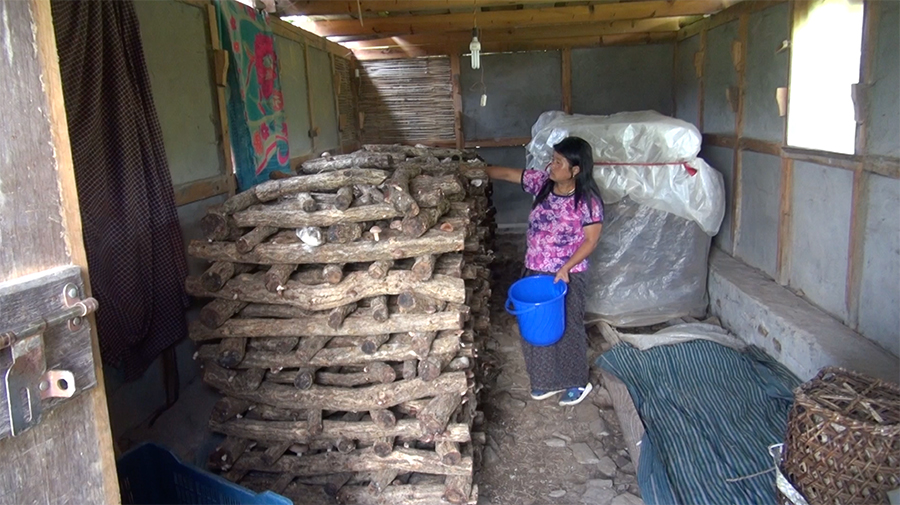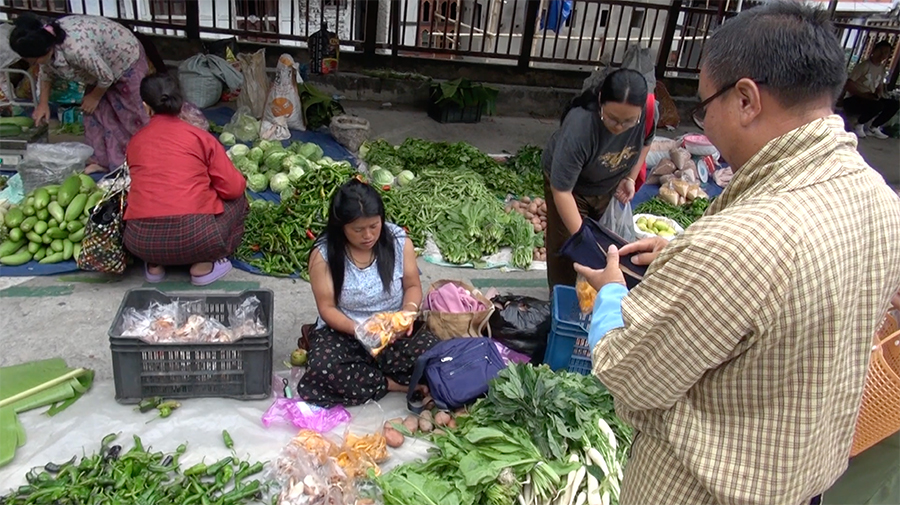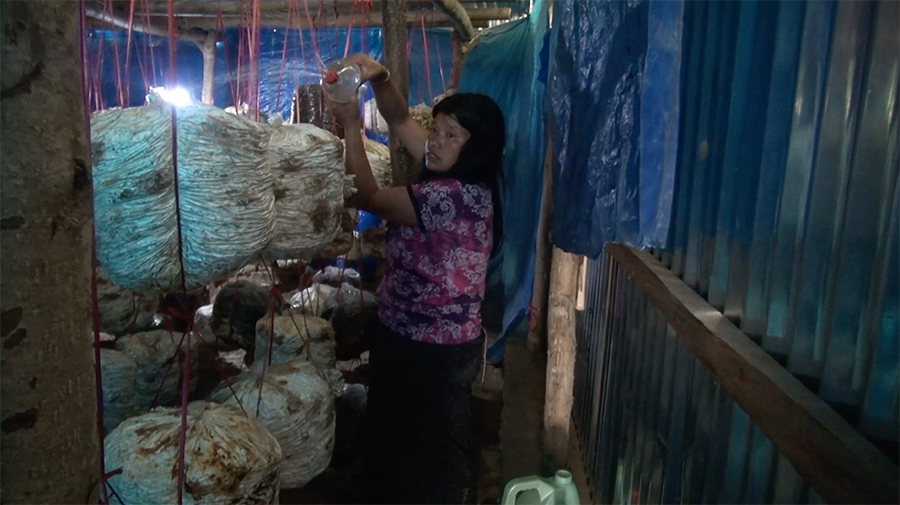 Mushroom farming is proving to be a reliable source of income for many rural households. In Bartsham Gewog in Trashigang, a family has been cultivating mushroom for nearly a decade and has become their main source of income.
Mushroom farming is proving to be a reliable source of income for many rural households. In Bartsham Gewog in Trashigang, a family has been cultivating mushroom for nearly a decade and has become their main source of income.
 43-year-old Cheki Dema and her husband have been cultivating mushrooms in two sheds.
43-year-old Cheki Dema and her husband have been cultivating mushrooms in two sheds.
These days, she is soaking hardwood logs that is injected with shiitake spawn and incubated for over six months.
The logs are then stacked and covered with plastic sheets to maintain humidity and temperature.
They mostly cultivate mushrooms during summer as the weather is favourable.
“During the summer season, I can harvest mushrooms just over a week after soaking the logs in water. But in winter, it takes around two weeks for the mushrooms to grow. We usually begin soaking the logs from February, as mushrooms don’t grow well during the colder months. In winter, we avoid soaking the logs because they tend to decay. On average, I harvest around 30 to 40 packets a week, and during peak production, it goes up to 50 packets.”
 She harvests mushrooms weekly and stores them in a refrigerator before selling them in Trashigang town.
She harvests mushrooms weekly and stores them in a refrigerator before selling them in Trashigang town.
A kilogramme of shiitake mushrooms fetches between Nu 400 to 500.
She said, “We took a loan to start mushroom cultivation. From the income we earn, we repay the loan, run the house, and also pay for workers. In a year, I earn over 100,000 ngultrum. In a week, I usually make around Nu 5,000 to 6,000 and sometimes I earn Nu 10,000 in a week.”
 Currently, she cultivates shiitake, oyster and Nameko mushrooms.
Currently, she cultivates shiitake, oyster and Nameko mushrooms.
The Agriculture Research and Development Sub-Centre based in Khangma in Trashigang provides technical support annually.
For farmers like Cheki Dema, mushroom cultivation is more than just a livelihood, it is a sustainable venture that supports the household, creates local employment, and showcases how small-scale farming can lead to meaningful income.
Sonam Darjay, Trashigang
Edited by Tshering Zam









